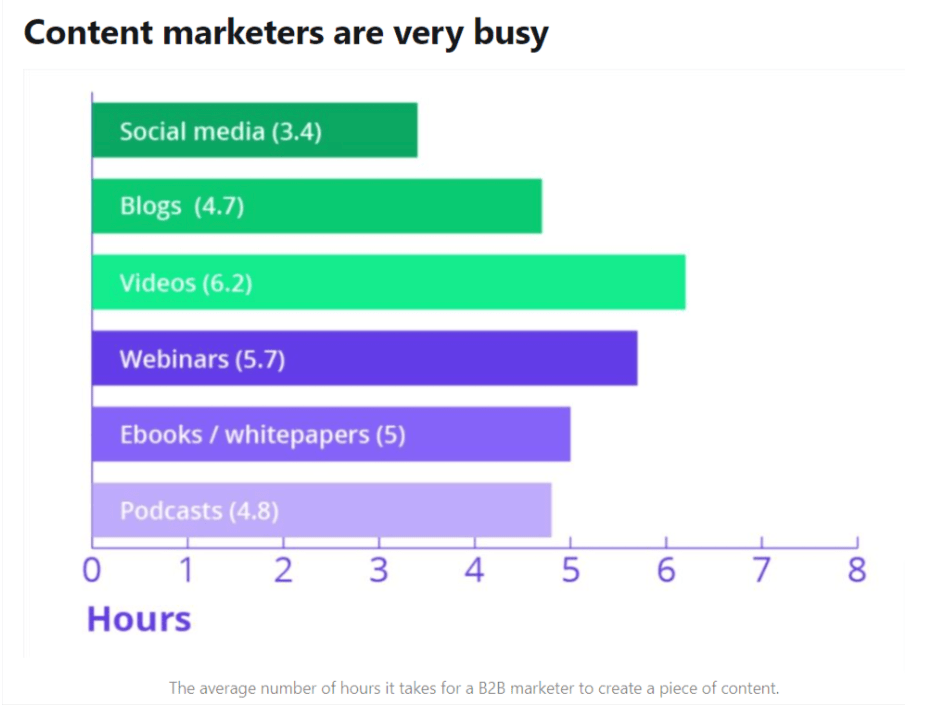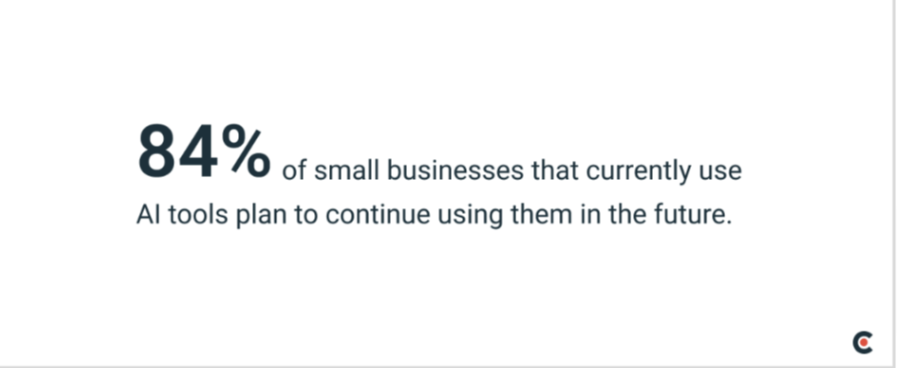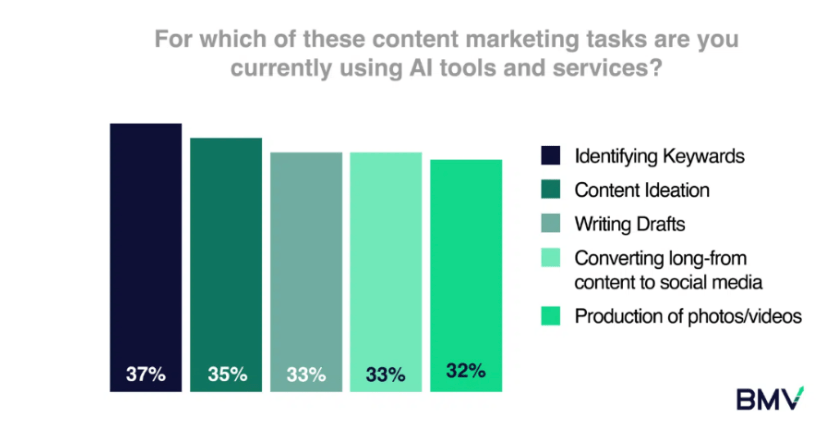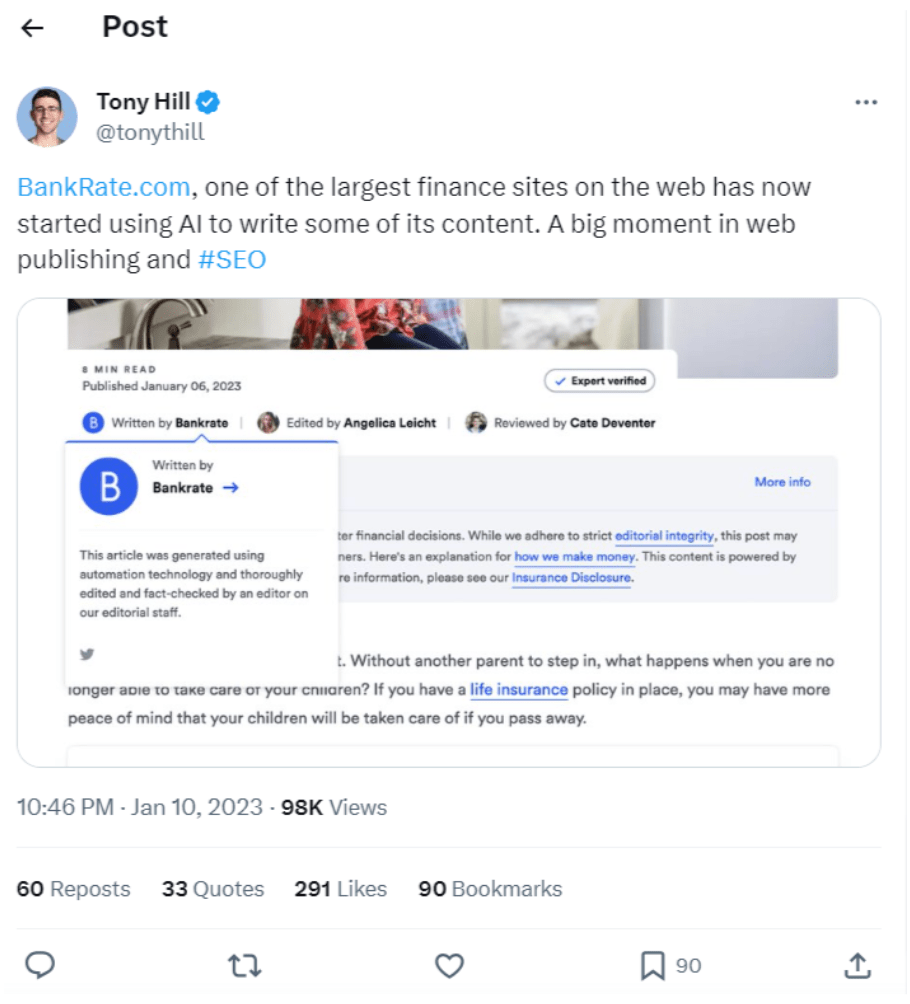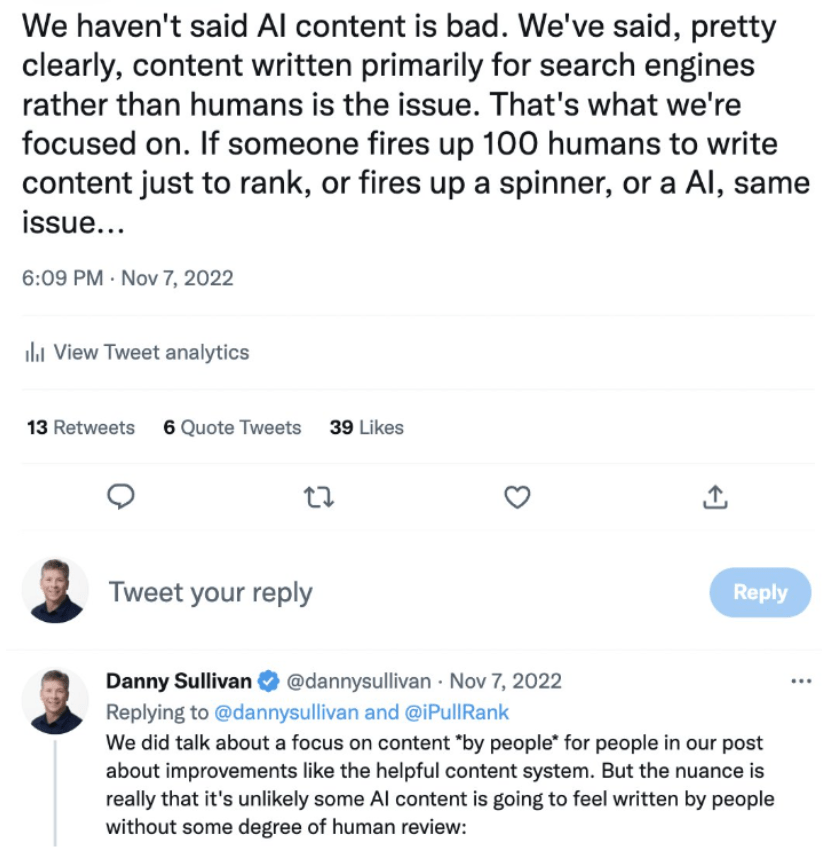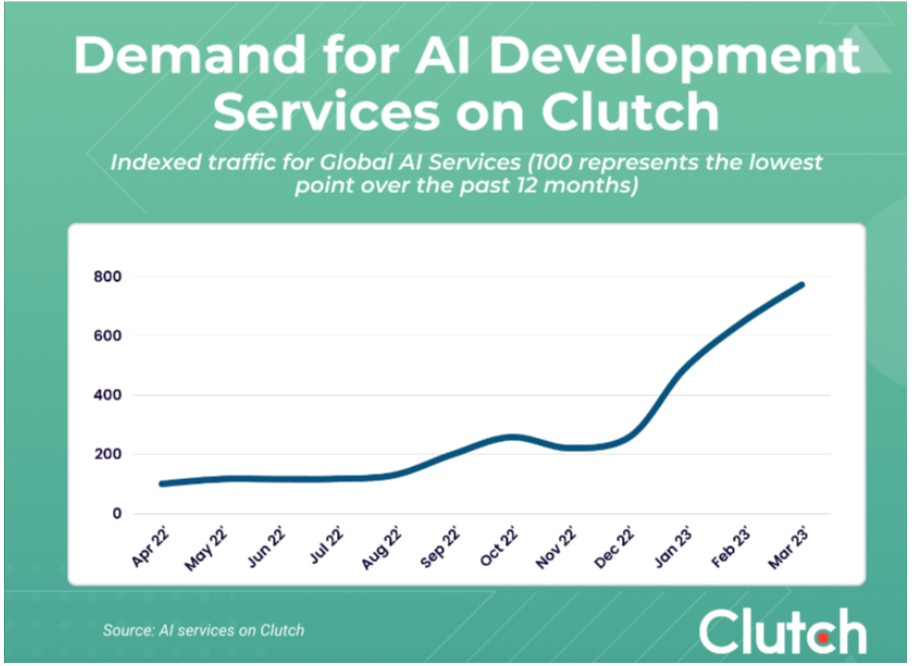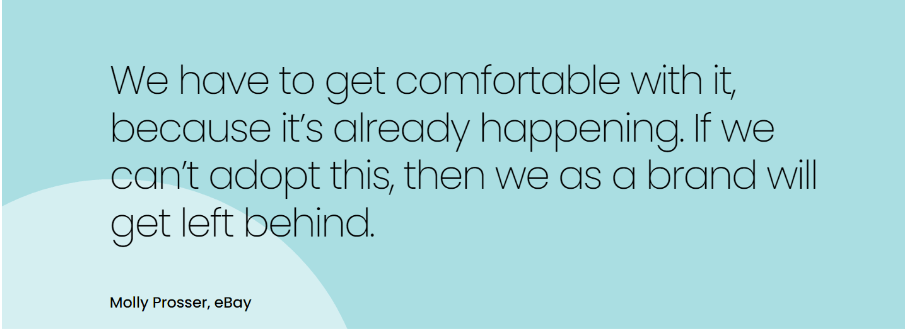Empowering Startups: Integrating AI into Your Content Strategy

Empowering Startups: Integrating AI into Your Content Strategy
Explore how leveraging AI can enhance creativity, streamline processes, and drive success in the dynamic startup landscape.
AI has become a buzzword in the content industry, reshaping how we create, distribute, and measure the success of our content marketing campaigns. While caught in the endless scroll on LinkedIn, the term might strike you as our arch-enemy.
Yet, it's hard to overlook the perks of heightened efficiency, particularly for early-stage startups whose mantra is to achieve more with limited resources.
Need a blog post? AI can craft one for you. Seeking eye-catching visuals? AI's got your back.
As businesses strive for inventive ways to amplify efficiency, especially in uncertain economic times, AI emerges as the go-to solution.
But amidst this tech-driven surge, how can startups harness AI for content marketing without losing their brand's authentic voice, style, and perspective?
Using AI in Content Strategy: The Right Way
The generation of content takes a lot of effort for content marketers.
On average, B2B content marketers devote 33 hours, or 82% of their working hours, to the process.
This doesn't even take into consideration the extra time you spent on each step of the content development process, such as:
- generating ideas
- researching and selectng keywords
- creating excellent outlines and content briefs
- publishing, editing, and all of the repurposing that happens after pressing the publish button
Not to mention the hours you've invested in developing a comprehensive, nuanced understanding of your target audience, including their problems, goals, consequences for failing, and a million other details that guarantee your strategy adds genuine value in a way that truly connects.
That’s where a lot of people go wrong with AI implementation in content marketing.
Can it quickly create a blog post or come up with a marketing strategy? Indeed.
Will readers be effectively prompted to perform a specific action by that post? Doubtful. Not without authenticity in the marketing and human assistance, anyway.
While AI may not delve deep into understanding your customers, it empowers you to craft compelling content by:
- Automating repetitive tasks, freeing up valuable work time.
- Initiating various aspects of content production, sparing you from starting afresh each time.
Fast-track Your Entire Research Process
Conducting thorough market research forms the cornerstone of an impactful content marketing strategy.
Understanding the specific needs of your target audience is the key to ensuring the success of your marketing campaign, meeting KPIs, and achieving success metrics. The objective is to expedite the time-consuming aspects of your content strategy.
Leverage the power of AI to delve into your target audience swiftly and assist your team in:
- Crafting content that resonates with your customers by incorporating their voice.
- Generating high-intent content aligned with the hub-and-spoke content marketing model.
- Re-optimizing outdated and underperforming content for sustained relevance.
- Identifying high-impact topic clusters to enhance search engine optimization (SEO).
- Staying abreast of industry trends to consistently align with your audience's interests.
- Monitoring competitors' offerings for strategic positioning.
- Managing and shaping your reputation and service narrative effectively.
- Translating complex topics into digestible content, such as medical terminology in healthcare or information on secure servers in web hosting.
Studying your target audience empowers you to discern precisely what messaging is needed to convert leads into sales. But before that, having the best lead magnet ideas is also important to convert visitors into leads.
Much like most companies, your competitors dedicate weeks to uncovering crucial revenue-generating insights. Your strategic advantage lies in the proactive use of AI.
AI TOOL SUGGESTIONS:
Read This: 15 Best Market Research Tools For Small Businesses
Content Editing & Keyword Research Amplified
When crafting a keyword list, the golden rule is to step into your audience's shoes. Imagine you're the one seeking the very service or product you offer – what would you search for and how? This fundamental step sets the stage for mapping out potential keywords.
Yet, as you advance your SEO strategy, relying solely on this approach becomes insufficient.
Why?
Because customer behavior isn't always predictable, that’s exactly where machine learning becomes an ally in identifying how people express their needs, helping businesses calculate CSAT more effectively.
Machine learning goes beyond mere keyword mapping; it unveils the intricacies of search habits. Now, you can identify relevant keywords and assess their competitiveness, cost per click, and search volume – ensuring a comprehensive approach.
You can choose from an array of AI tools available in the market, like GetGenie AI, SurferSEO, and Clearscope.
They don't just offer keyword suggestions; they provide insights into ideal word count, heading structures, and internal and external links – a holistic view of content optimization. Some even assist in developing a content strategy and monitoring keyword placement, readability, and content score.
Think of them as your SEO companions, guiding you not just on what to say but when and where to say it for maximum visibility.
Check this out: How To Identify Content Gaps With An SEO Audit
Streamline Content Creation & Strategy Development
Alright, so you have a list of keywords and your user persona. What happens next? How can you combine the two and optimize your content with AI and machine learning?
These tools can evaluate the data and inputs you offer, giving you relevant insights to develop a content outline or brief.
What used to take hours of research and sometimes even days to complete can now be completed in a matter of minutes.
This is a big deal, especially for a one-person or a lean team!
To locate the best content opportunities, these systems typically employ inputs like personas, the URL of your website, and competitor's audit.
Better Quality Content With a Quick Turnaround
AI technology optimizes everything – topics, titles, images, videos – based on users' preferences. Sure, initial AI drafts might not wow you, but the flood of ideas it generates helps your creative team whip up final products faster.
Consider a hustle culture: a team of 20+ writers and only two editors (very common setup). Conventionally, editors would be burning the midnight oil to refine this avalanche of content.
Everything doesn’t have to be done exclusively by an editor. With AI writing assistance, sorting out style, language, voice, and clarity issues, the content keeps flowing, and editors sail through their workload.
Moreover, AI swiftly repurposes long-form content into concise, impactful formats such as text to speech. This not only accelerates turnaround times but also ensures precision and brand uniformity.
The team at 5minutesseo.com has found that AI works best when they use it to build content in segments.
“In our agency, we've been on a journey of trial and error, figuring out the sweet spot for employing AI to craft blog posts and web content. After experimenting with various generative AI tools, we've discovered that the sequential content-building approach works best.
We start with the outline, then nail down the intro, and finally craft the full article. Also, we always let the human touch come in at each step, allowing writers to course-correct and add that unique flair.”
Vineet Gupta, Founder & CEO
AI TOOL SUGGESTIONS:
- Copy.ai
- ChatGPT
- Murf.ai
- Writesonic
- Grammarly
- Jasper
Automate Multi-Channel Content Distribution & Promotion
McKinsey estimates that 50% of job tasks have the potential to be automated. Promotion and distribution fit into this category for content marketers more than anything else.
AI has greater resources at its disposal because more comprehensive input consistently produces better outcomes.
Use your advertising budget more wisely by figuring out where your best leads are coming from and spending on the most qualified prospects. This will increase your return on investment (ROI).
For example,
Businesses can effectively address gaps in lead qualification by incorporating AI tools equipped with data and predictive analysis directly into Google Ads. This way, Google Ads will be able to bid more intelligently on keywords or creatives that actually generate income rather than merely calls and clicks.
AI TOOL SUGGESTIONS:
Can Google Detect and Rank AI Content?
A burning question on everyone's mind ever since ChatGPT came into existence. Can Google distinguish AI-generated content? If yes, does Google rank AI-generated content?
However, framing the question this way might miss the point.
When utilizing AI for content creation, it's crucial to view it as a tool rather than a standalone creator. Moreover, human involvement is often necessary to inject the content with the interest, relevance, and engagement that readers seek.
The better question is:
"Is your content high-quality, authoritative, and relevant to what searchers are looking for?"
In April 2022, Google's search advocate, John Mueller, categorized AI-generated content as spam and against Webmaster guidelines. Fast forward to February 2023, Google acknowledges that not all AI content is spam.
The update clarified that when done right, AI-generated content can serve its purpose without manipulating search rankings.
Image Source: Danny Sullivan, Google Search Liaison (@dannysullivan)
What remains constant is Google's emphasis on content that demonstrates expertise, experience, authoritativeness, and trustworthiness (E-E-A-T). Publishers are advised to concentrate on creating original, top-quality, people-first content to significantly impact search results.
Long story short…
What matters is the content's utility for readers, NOT the method you used to create it.
As long as it’s written to help people, not just to earn search rankings, Google's on board – whether it's born from neurons or algorithms.
Strategic Integration of AI into Content Marketing Workflow
As we continue to progress into the AI era, let's chart a path for the thoughtful incorporation of AI into your workflow for content marketing.
The goal here is to improve your team's capabilities and free them up to concentrate on strategy and creative projects rather than replace them with robots.
Step 1: Setting the Stage for AI Adoption
Identifying the Needs
Evaluate your current content marketing approach before implementing AI.
- What are your pain points?
- In what areas could you be more productive?
This will assist you in identifying areas where AI can have the most influence.
Choosing the Right Tools
There’s an ocean of AI tools available for different purposes. The key is carefully selecting tools that align best with your objectives and seamlessly integrating them into your existing tech stack.
Content operations management poses unique challenges, especially with remote or distributed digital marketing teams. To streamline processes, consider leveraging tools like Content Snare. Acting as a checklist with automatic reminders, it minimizes the chaos of emails and messy systems.
However, if you're exploring more centralized options, other compelling alternatives to Content Snare are worth exploring. Each has its own set of unique features to enhance your workflow.
You’ll also want to think ahead to different aspects of content marketing to identify your needs before choosing the right tool for your business. For example, do you want to use AI to help develop free tools and templates?
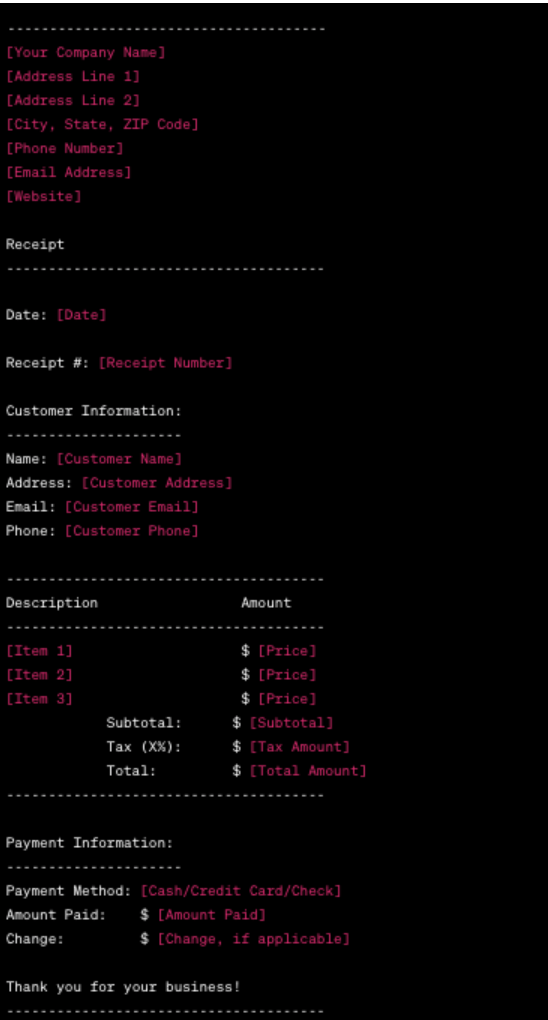
Above, we asked ChatGPT to create a receipt template for us.
Step 2: Data is Your Compass
Gathering Data
Data is what AI is made of, so start gathering it. The effectiveness of AI in guiding content marketing decisions is directly proportional to the quality of data it has access to.
Analyzing & Acting on Insights
Using sentiment and predictive analysis, actionable insights can be derived from the data and can be put into practice.
- What piques the interest of your viewers?
- What are they ignoring?
- Make use of these observations to guide your content approach.
Step 3: Content Creation & Optimization
AI-Generated First Drafts
Create initial content drafts with AI. This can expedite the writing process, but keep in mind that this is just the start. You are responsible for bringing the originality and unique brand voice that comes from human supervision at every step.
Let's compare the two intros—one written by ChatGPT and the other by a human writer—in the screenshots below to see how they differ:
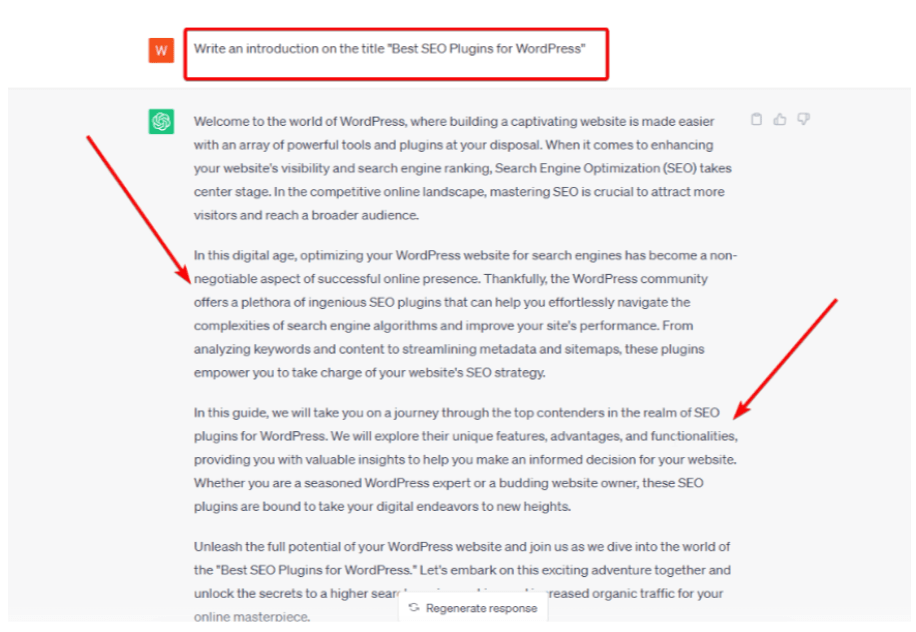
Without a doubt, ChatGPT performs remarkably well in compiling useful information. However, it needs to be more concise for readers.
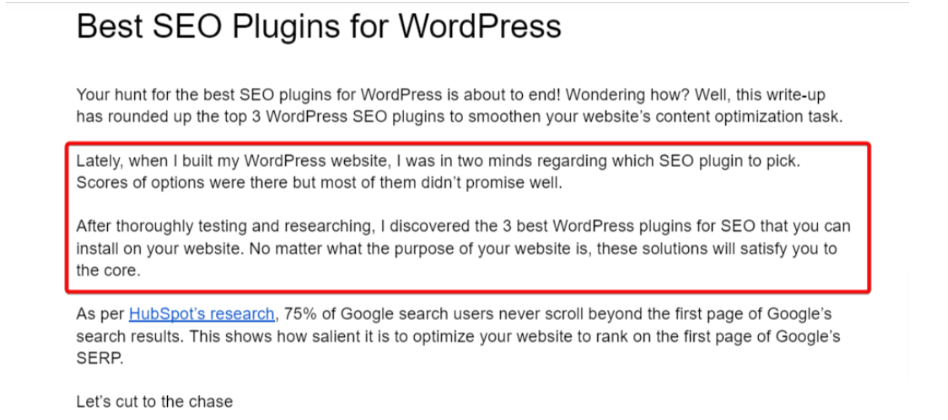
On the other hand, the following human-written intro is not only succinct but also provides a personal story that engages readers and fosters trust.
Real-Time Optimization
Use AI to optimize your content in real time to always reflect the most recent audience preferences and SEO trends.
Content Localization
A skillful use of AI translation can considerably speed up your content localization efforts. Mind you, you’ll still need some common sense and human post-editing for optimal results.
Step 4: Personalization & User Experience
Hyper-Personalized Content
Create a customer experience for every visitor by utilizing AI. This can take the form of intricate targeted email campaigns or something as basic as suggesting articles based on previous usage patterns.
Enhancing User Experience
AI can help you continuously improve user experience on your site by analyzing how users interact with your content and suggesting changes accordingly.
Take a clue from eBay embracing AI as a prime example. Renowned for its consumer-to-consumer online auctions, managing billions of trending e-commerce products and catering to millions of viewers poses a significant challenge in meeting individual customer needs.
EBay leveraged AI tools to craft personalized messages tailored to each customer's interactions to tackle this complexity.
This showcases how AI customer service tools can go beyond issue resolution. They become instruments for understanding user behavior, preferences, and needs, allowing startups to explore similar avenues.
Step 5: Hold On to Your Business’s Authenticity
Although AI is a potent tool, every problem in your startup cannot be solved by it alone.
Consider what AI gets you and what it costs.
Increased productivity is possible, but if you rush things, you run the risk of standardizing your procedures and output and sounding just like everyone else.
Then, how can executives in startups use AI? Identify the areas where AI isn't applicable and what sets your company apart.
Instead of removing what makes your business unique, use AI to strengthen it.
Incorporate AI to fortify email security. Utilize advanced threat detection, behavioral analysis, and incident response automation, including the setup of DMARC (Domain-based Message Authentication, Reporting, and Conformance), to safeguard against phishing attacks, unauthorized access, and potential security breaches. AI-driven content filtering ensures the classification of emails, strengthening your overall cybersecurity posture.
Step 6: Measuring Success & Learning
Analytics and Reporting
Analytics systems driven by AI can sort through enormous volumes of data to report on the performance of content, offering insights that would take people a lot longer to gather.
Continuous Learning
The capacity of AI to learn and change over time is perhaps its greatest asset. Your content marketing plan can be continuously improved if you feed it the correct data.
Build AI Empowered Content Strategies For Early-Stage Success of Startups
AI is not tapping the brakes anytime soon, and those who hesitate to embrace and explore these tools in their content strategy risk falling behind.
We're just scratching the surface of what artificial intelligence can do, and trust us, there's a lot more in the pipeline.
When it comes to infusing AI into your content strategy, think smart.
- Get your team on board,
- streamline those processes, and
- set the stage for AI.
But, and it's a big but, don't go in blindfolded.
Remain vigilant about issues like plagiarism, employ AI detection responsibly, and address ethical concerns while keeping abreast of the latest developments.
Now, if you're nodding along and thinking, "Alright, let’s integrate AI into content strategy." Do it with finesse.
Don't just follow the herd; understand the game, do your homework, and dodge those potentially costly mistakes.
Hire an AI development company to assist with your business goals.
